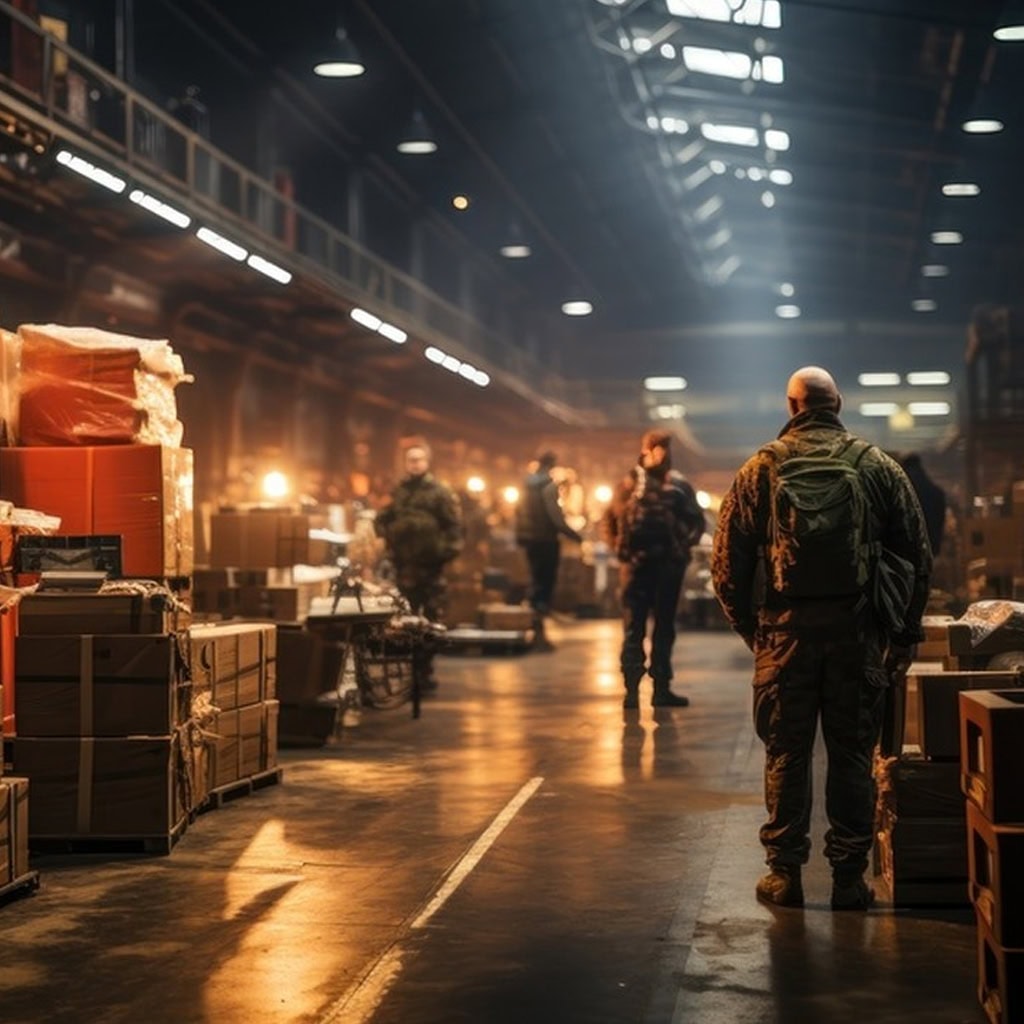Winning Military Uniform Contracts: An Authoritative Guide to the Full B2B Bidding & Execution Process

Introduction: From Opportunity to Contract, From Contract to Successful Delivery
The military uniform procurement market is a multi-billion dollar arena, governed by strict rules yet filled with vast opportunities. For aspiring contractors and bidders, the journey from identifying a business opportunity amidst a sea of information to securing a substantial contract, and finally, to successfully delivering tens of thousands of compliant uniforms, is both challenging and rewarding.
Winning a bid is not just a victory on price. It requires a profound understanding of the procurement process, a precise grasp of technical specifications, and a failsafe production execution plan. This guide is designed to provide you with a clear, A-to-Z roadmap, navigating you through the entire process from finding a bid to final delivery, and illustrating why selecting a reliable manufacturing partner is the cornerstone of your success.
Finding the Battlefield: Where to Discover Military Contract Tenders
It all begins with information gathering. You need to know where the “battlefield” is.
The Core Platform: SAM.gov (System for Award Management)
This is the single official portal for the U.S. federal government to post all contract tenders. All government contracts valued over $25,000 must be advertised here. This is your primary ground for finding opportunities.
Search Techniques:
- Keywords: Use precise keywords for your search, such as “military uniforms RFP” (Request for Proposal), “combat uniforms bid,” or “ACU contract.”
- NAICS Codes: Filter using North American Industry Classification System codes, for instance, 315210 (Cut and Sew Apparel Contractors) or 315220 (Men’s and Boys’ Cut and Sew Apparel Manufacturing).
Understanding Solicitation Types:
- RFP (Request for Proposal): The military has a clear need but wants contractors to provide a detailed technical and management solution.
- RFQ (Request for Quotation): Typically used for standardized products where price is the primary determining factor.
- IFB (Invitation for Bids): Similar to an RFQ, the contract is usually awarded to the lowest bidder who meets all requirements.
Deciphering the “Operations Order”: How to Dissect a Uniform RFP
A military contract’s Request for Proposal (RFP) can often be hundreds of pages long, like a complex “operations order.” Meticulously and professionally interpreting it is the first step to success. A typical RFP usually contains these core sections:
- Scope of Work (SOW): This is the overall description of the contract. For example, you might see an attachment named “Exhibit 3: Uniforms Scope.pdf,” which defines the procurement goals, uniform types, quantities, and basic delivery requirements.
- Technical Specifications: This is the most critical section, where the devil is in the details. It will specify fabric types (e.g., NYCO 50/50 Ripstop), weight, color codes (like the PANTONE numbers for OCP), sewing standards, button/zipper specs, and more.
- Compliance Requirements: This section clearly states mandatory laws and regulations, such as the Berry Amendment, which mandates that textiles be manufactured in the United States.
- Evaluation Criteria: This openly informs you of the criteria the military will use to judge your proposal. It’s often a comprehensive assessment of technical merit, past performance, management capability, and price—not just the lowest price.
Want to learn how to read an RFP like an expert? Read our step-by-step guide: Deconstructing the RFP: A Step-by-Step Guide to Interpreting Uniform Contract Solicitations
Technical Compliance: Meeting Mil-Spec is Your Ticket to the Game
In military procurement, Military Specification (Mil-Spec) is the absolute authority, with no room for compromise. For instance, a contract for OG uniforms might have a dedicated attachment like “Guidelines/detailed instructions on stitching of OG Uniform,” which specifies:
- Stitch Density: How many stitches per inch are required.
- Thread Type: Use of specific-grade and high-tensile nylon thread is mandatory.
- Reinforcement: “Bar-tacking” reinforcement is required at high-stress points like pockets and crotches.
As a bidder, you must prove in your proposal that you can meet these stringent technical specifications 100%. This is precisely where our core value as a professional manufacturer lies. We possess Mil-Spec compliant production lines, experienced technicians, and a rigorous quality control system, serving as a powerful guarantee for your technical compliance commitment.
Beyond the Proposal: What Determines the Final Victory?
When all bidders are evenly matched on technical merits and price, the following factors become decisive:
- Past Performance: Can you provide evidence that you or your manufacturing partner have successfully delivered projects of similar scale and complexity in the past?
- Production Capacity & Supply Chain Security: Can you demonstrate that you have a reliable manufacturing partner and supply chain capable of handling large-volume production and potential risks?
- Quality Control Plan: Have you submitted a detailed and credible plan outlining how you will manage quality throughout the entire process, from raw materials to finished products?
Understanding the evolution of U.S. military camouflage can help you better grasp technical requirements. Read: From UCP to OCP: The Evolution of Military Camouflage and Uniform Design
After the Win: From “First Article” to Full-Scale Production
Winning the contract is just the beginning of the battle; successful delivery is the ultimate victory. The subsequent process typically includes:
- First Article Testing (FAT): Before mass production, you must submit one or more “first article” samples that fully conform to all specifications for the military’s rigorous testing and inspection. Only after passing FAT can mass production begin.
- Production and Delivery: As your manufacturing partner, we will work closely with you to develop a detailed production plan, quality control checkpoints, and a phased delivery schedule to ensure the smooth execution of the contract.
Winning the contract is the start; successful delivery is key. Understand the behind-the-scenes process: After the Award: The Lifecycle of a Military Uniform from Contract to Customer
Conclusion: Choosing the Right Manufacturing Partner is the Cornerstone of Your Success
Winning a military uniform contract is a complex systems engineering project. It requires you, as the prime contractor, to demonstrate exceptional professionalism in proposal writing, project management, and client communication. Simultaneously, and more importantly, it requires a rock-solid partner who is absolutely reliable, technically superior, and failsafe in the manufacturing process to serve as your strong backing.
You focus on winning the contract; we focus on perfect production. Our expertise, production capacity, and deep understanding of Mil-Spec will become the most persuasive part of your bid proposal. Let us be your preferred manufacturing partner for winning and executing military uniform projects.
Contact us today to discuss your project needs, and let’s turn opportunity into reality together.

